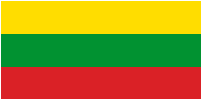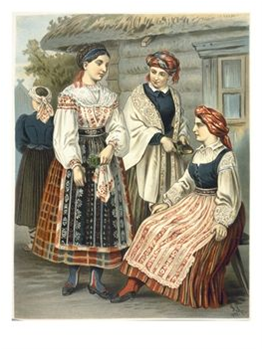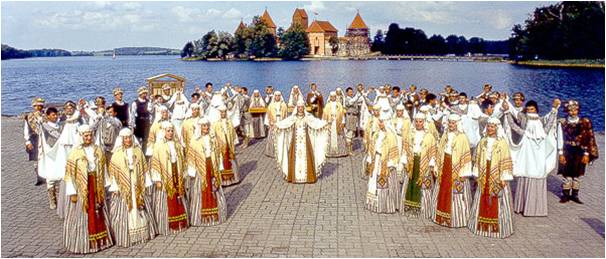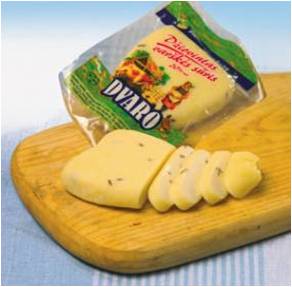
SOCRATESComenius 1.2Countries of Silk and Linen : Ethnocultural Dialogue
 |
Yellow: the fertile fields of Lithuania, golden with ripe rye, wheat, flax, and other grains. Green : the symbol of the nation's vitality (as represented in nature also). Red : the blood shed in defending the homeland's freedom. |
| Area: 65 300 km² Population: 3.5 mln. Capital: Vilnius Religion: Catholic Language: Lithuanian |  |
 | Lithuanian Folk Songs - Lithuanians always sang while working or celebrating. They sang to chase away sadness or to help them survive difficult times. Songs were handed down from generation to generation, exchanged among villages. Lithuanian songs show different aspects of family and community relationships as well as contacts with nature. There are over 400,000 collected songs. Lithuanian folk songs are divided into some categories such as work, wedding, calendar cycle and ritual songs. Other songs do not have any ritualistic function, so they may be sung anytime. Those songs are thematically classified into songs of youth, songs of love, and songs of family life. |
| Lithuanian traditional dances and games - Dance is a celebration of the human spirit, an art that transcends the boundaries of language, age and culture. Folk dancing is a form of social dancing that has become part of the customs and traditions of lithuanian people.Lithuanians, as well as their Baltic neighbors, have always loved to dance. Young people gathered to dance in field parties (in summer), or in farmer houses (in winter). Older people and small children also took part in these festivities talking, socializing, and generally amusing themselves. Most folk dances were originally created among people in villages and were passed on from generation to generation in a particular region. Today, dance groups perform in their national costumes and so help preserve their heritage and traditions. |  |

| LITHUANIAN DISHES - Lithuanians like to eat good, tasty and filling foods. The tradition of eating well is inherited from our ancestors, who would say, who eats well, works well. Lithuanians usually eat three times per day. The most filling, sumptuous meals are breakfast and lunch. Porridges, pancakes and soups for breakfast, soups, meat and potatoes for lunch. In the evening, dinner is a light meal. One of the oldest and most fundamental Lithuanian food products was and is rye bread. Rye bread is eaten every day for breakfast, lunch and dinner Lithuanians link many beliefs and magic with bread. Bread is shown great respect. If a piece of bread falls accidentally to the ground, it is picked up with reverence, kissed and eaten. |
Copyright © presscot 2006 Please visit My Webiste